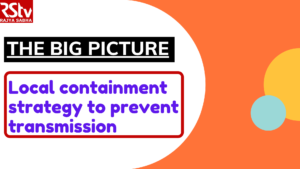CONTEXT
A recent webinar on NEW EDUCATION POLICY 2020, raised a question on federal courtesy of new policy with reference to Centre-state relations and role in education. Even the 1986 policy didn’t fully acknowledge the variety prevailing in provincial practices and the legacies those practices are rooted in.
EVOLUTION IN THE PROVINCES
- ONE hundred years ago, the Central Board Of Education was created to co-ordinate regional responses to common issues. The ‘advisory’ character of this administrative mechanism meant that the board served mainly as a discussion forum. States was treated as the appropriate sphere for dealing with education in constitutional original draft.
- Like other Federal countries India chose to have a Ministry Of Education at the centre.Its role was to articulate aims and standards ,or to pave the road to nation building and development. After Independence, centre’s activities in education emerged in the shape of advanced institutions in professional fields and schools specifically meant for the childrenof civil servants transferrable across India.
- A decade later, national policy was drafted which emphasised national concerns and perspective without referring to provincial practices. Engagement with the states remained a function of Planning Commission. In a meantime, a burgeoning private sector had begun to push both public policy and popular perceptions of education.
EDUCATION IN INDIA
CONSTITUTIONAL PROVISIONS
- PART IV of Indian Constitution, Article 45 and Article 39(f) of Directive Principles of State Policy (DPSP) , has a provision for state-funded as well as equitable and accessible education.
- The 42nd Amendment to the Constitution in in 1976 moved education from the state to the concurrent list.
- The 86th Amendment in 2002 made education an enforceable right under Article 21-A.
RELATED LAWS
- RIGHT TO EDUCATION (RTE) ACT,2009 aims to provide primary education toall children aged 6 to 14 years and enforces education as a fundamental right.
- It also mandates 25% reservation for disadvantaged sections of the society.
GOVERNMENT INITIATIVES
- SarvaShikshaAbhiyan, Mid Day Meal Scheme, NavodayaVidyalayas ,KendriyaVidyalayas and use of IT in education are a result of the NEP of 1986.
NATIONAL EDUCATION POLICY, 2020
- It was introduced to make several changes in the Indian education system- from the school to college level.
- It aims at making “India a global Knowledge superpower”.
- The cabinet has also approved the renaming of the Ministry of Human Resource Development to the Mininstry of Education.
- It is the third major revamp of the framework of education in India since independence ( two earlier education policies were brought in 1968 and 1986).
THREE SYSTEMS
- CENTRAL SYSTEM
- It is running an exam board that has an all-India reach through affiliation with English medium private schools .
- Two school chains are part of this system.
- It also includes advanced professional institutes and universities that have access to greater per capita funding.
- STATE SYSTEM
- It features provincial secondary boards affiliating schools teaching in state languages.
- It also includes advanced professional institutes and universities.
- PRIVATE INVESTMENT
- International accredited school boards and globally connected private universities .
An explicit attempt was made under the Right To Education (RTE) Act to bridge the first two system. The RTE is a parliamentary Law , providing a set of standards for elementary education and a call to private schools to provide for social justice via the quota route. Accreditation norms and recognition procedures create a semblance of public accountability. Inequalities have become sharper with the rise in overall prosperity. Education must mediate between different social strata divided by caste and economic status. A recent attempt made by Tamil Nadu to create a modest quota in NEET for students who attended government schools points towards an endemic problem exacerbated by centralisation.
SOCIAL VISION
- The new policy document underestimates the problem of reconciling the three systems.
- Functional uniformity is unlikely to offer any real solution.
- In higher education, it proposes nationally codified and administered measures to oversee institutional transformation across state capitals and district towns, with the assumption that old structure will melt like wax under the heat of an empowered vision.
- Policy favours greater private enterprise in higher education.
- At the school level, the new policy proposed post-RTE structural shift, ignoring the fact that the RTE has not yet been fully implemented.
WAY FORWARD
- People need to think what kind of society they want before drafting a policy in education.
- We need a systematic vision both for recovery from institutional decay and for future progress.
- There is a need for financial support for the implementation of RTE and policy guidance for the proper use of this support so that regional disparities diminish.

